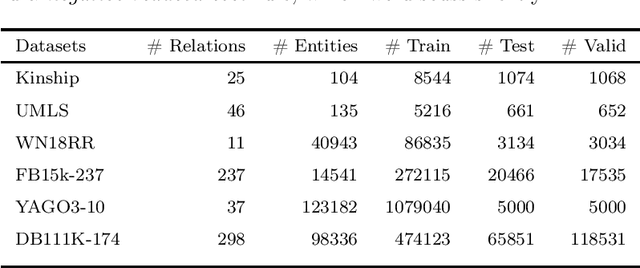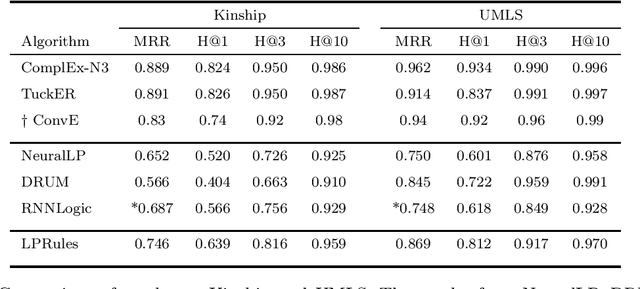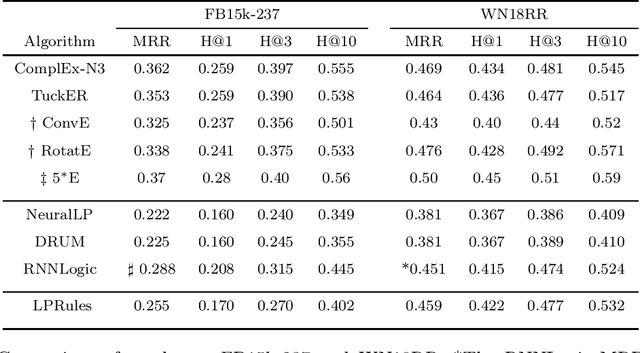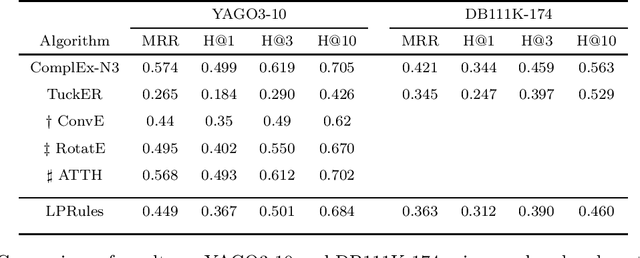LPRules: Rule Induction in Knowledge Graphs Using Linear Programming
Paper and Code
Oct 15, 2021



Knowledge graph (KG) completion is a well-studied problem in AI. Rule-based methods and embedding-based methods form two of the solution techniques. Rule-based methods learn first-order logic rules that capture existing facts in an input graph and then use these rules for reasoning about missing facts. A major drawback of such methods is the lack of scalability to large datasets. In this paper, we present a simple linear programming (LP) model to choose rules from a list of candidate rules and assign weights to them. For smaller KGs, we use simple heuristics to create the candidate list. For larger KGs, we start with a small initial candidate list, and then use standard column generation ideas to add more rules in order to improve the LP model objective value. To foster interpretability and generalizability, we limit the complexity of the set of chosen rules via explicit constraints, and tune the complexity hyperparameter for individual datasets. We show that our method can obtain state-of-the-art results for three out of four widely used KG datasets, while taking significantly less computing time than other popular rule learners including some based on neuro-symbolic methods. The improved scalability of our method allows us to tackle large datasets such as YAGO3-10.
 Add to Chrome
Add to Chrome Add to Firefox
Add to Firefox Add to Edge
Add to Edge